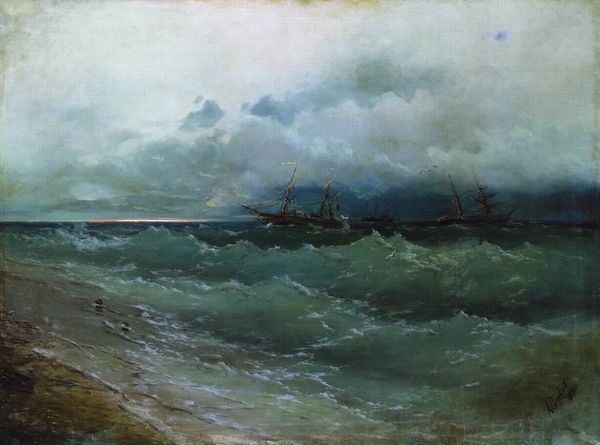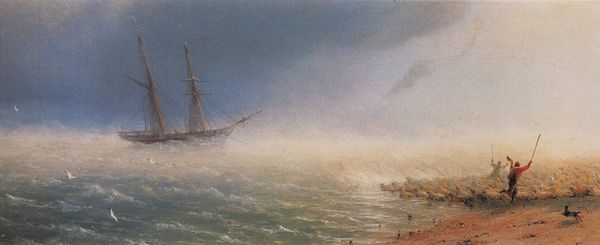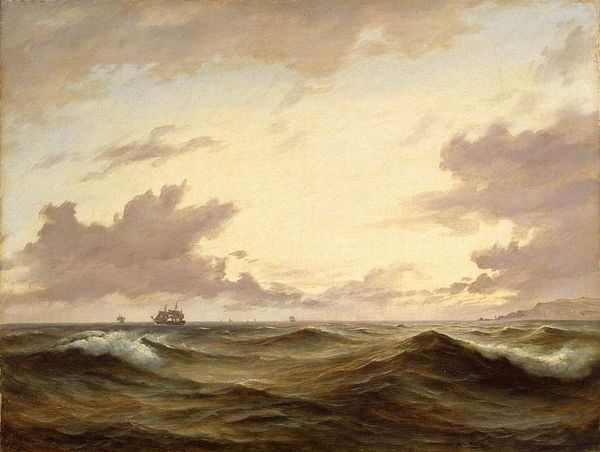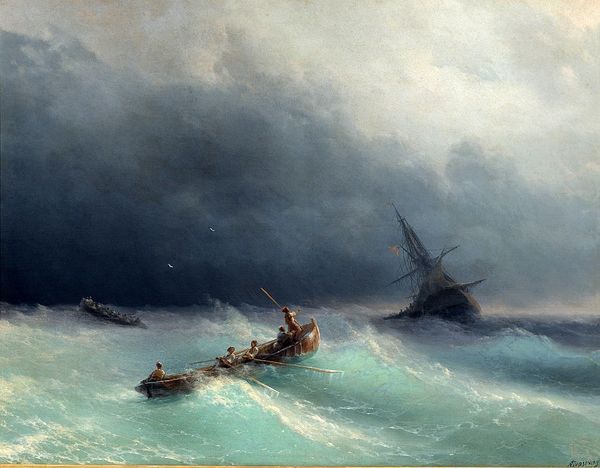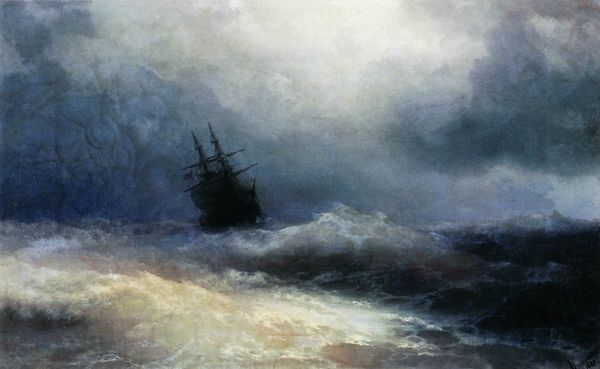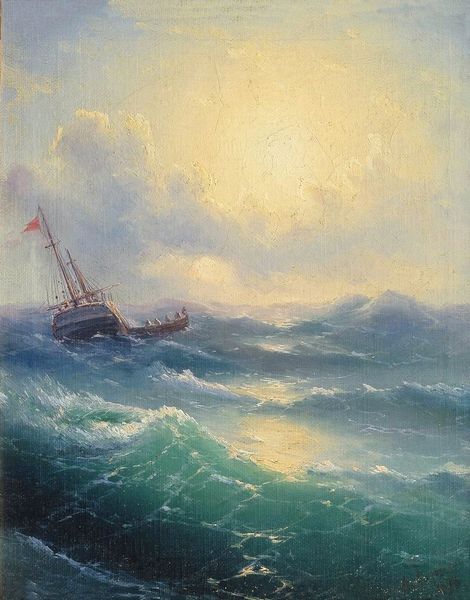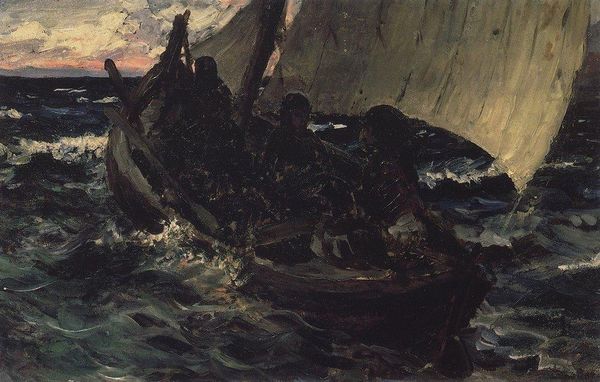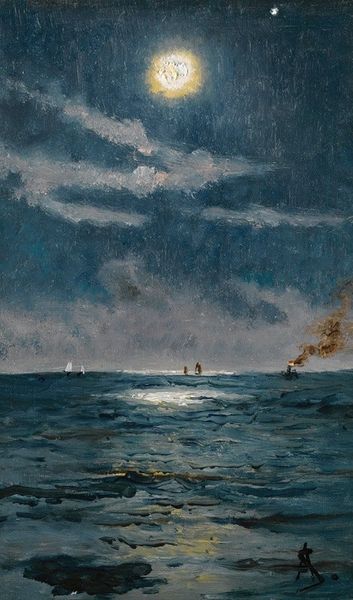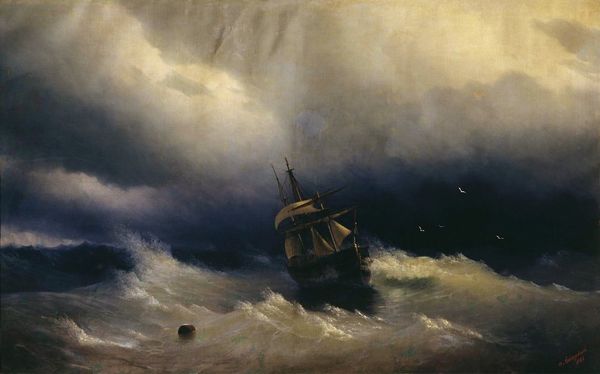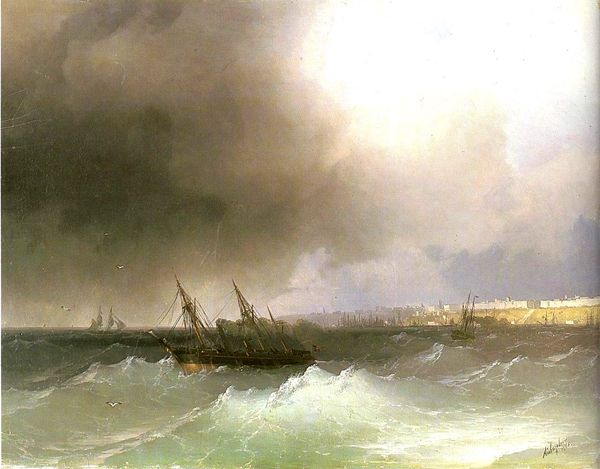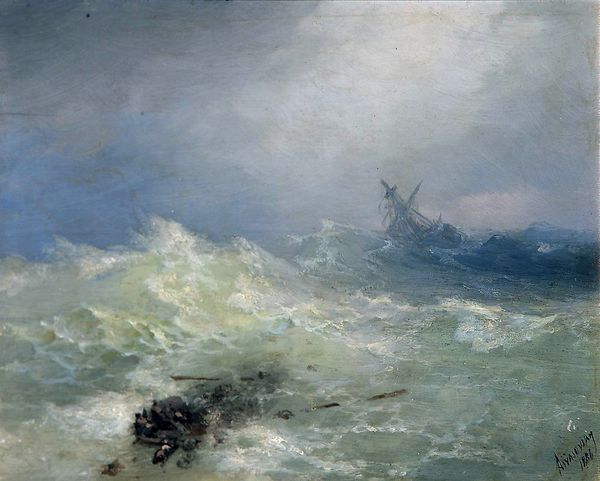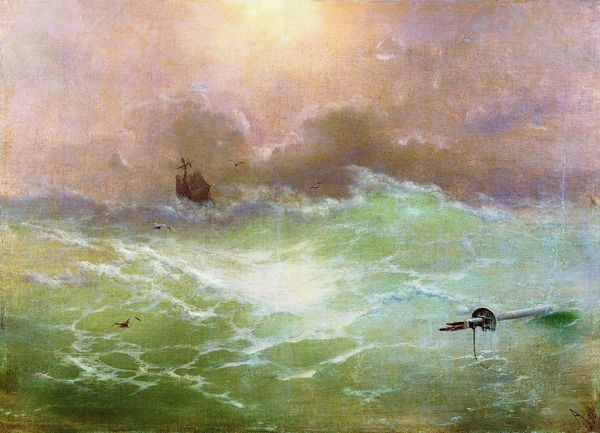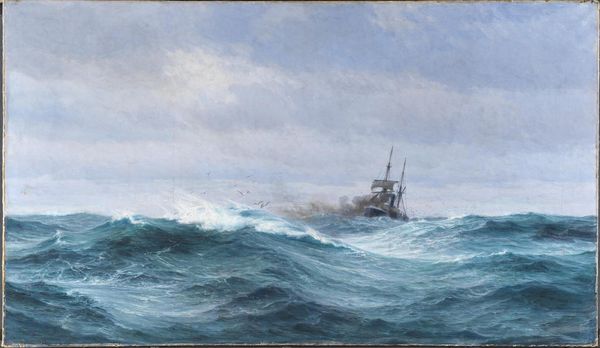
Copyright: Public domain
Editor: Ivan Aivazovsky’s "Boat in the Sea," painted in 1894, is a compelling depiction of a vessel battling a tempestuous ocean, rendered in oil paint. I'm struck by how raw the energy feels; I'm really interested in understanding how the materials and the making impact that. How do you interpret this work, looking at the methods and conditions of its creation? Curator: Considering Aivazovsky's practice, we can examine the materiality of the painting process. His rapid, layered application of oil paint simulates the churning sea, doesn't it? Think about where and how Aivazovsky likely created the image: How do the labor and production behind it reflect the subject of a perilous journey and the human struggle against a natural force? Editor: I hadn't considered that relationship between the painting's production and subject so directly. So, the frantic energy isn't just a reflection, but an embodied quality coming directly from Aivazovsky’s actions? Curator: Precisely. The very act of creation mirrors the boat’s struggle, elevating what some might dismiss as "seascape" into a reflection on the material conditions of labor itself. Consider too the role of the market – Aivazovsky was prolific. How did demand influence the quick, expressive brushwork we see? Editor: So the pressure to produce also helped to inform its creation...It makes you wonder about the human cost. Curator: Exactly. And doesn't this perspective make us consider the raw materials – the canvas, the oil, even the pigments – as commodities shaped by economic forces? Editor: It definitely re-frames it! I guess looking at a piece from this perspective gives me a richer sense of the processes and cultural implications behind even a single artwork. Curator: I'm glad to hear that, and hopefully by interrogating material processes, it might allow a further understanding.
Comments
No comments
Be the first to comment and join the conversation on the ultimate creative platform.
